|
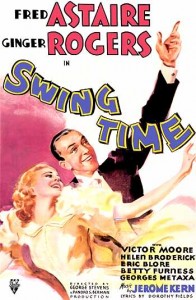
Synopsis:
A dancer with a penchant for gambling (Fred Astaire) is challenged by his future father-in-law (Landers Stevens) to earn $25,000 before marrying his daughter (Betty Furness), and heads to New York with his trusty sidekick, “Pop” (Victor Moore) to secure the funds. Once he arrives, however, he falls immediately in love with a young dance instructor (Ginger Rogers), and tries his best not to earn the money; meanwhile, Rogers is pursued by a slick orchestra conductor (Georges Metaxa) who is eager to marry her.
|
|
Genres, Themes, Actors, and Directors:
- Dancers
- Fred Astaire Films
- George Stevens Films
- Ginger Rogers Films
- Love Triangle
- Musicals
- Romantic Comedy
Response to Peary’s Review:
As Peary notes, “there’s little to complain about” with regards to this “enchanting” Astaire/Rogers collaboration — often cited along with Top Hat as one of their most successful ventures. He points out that, for once, “the stars play real — well, almost real — people”, noting that it’s easy to root for them given that they’re playing such “appealing, unpretentious characters”. Unfortunately, the script gets off to a rather painful start, with no dancing for the first half hour, and a truly cruel — albeit ultimately “for the best” — practical joke played upon poor Astaire, who’s made to miss his own wedding. Once he arrives in New York and meets Ginger, however, the sparks begin to fly, with song after song a true delight. The script somewhat predictably revolves upon mistaken identities (Rogers doesn’t know that Astaire is an engaged man), but this time around the storyline remains relatively believable, and eminently affecting.
Rogers — perhaps due to expert guidance from director George Stevens — is in peak form, investing her character with pathos and genuine charm; Astaire is equally fine, and it’s fun to see both Eric Blore and Helen Broderick returning in supporting roles (though Blore’s part should have been bigger). It’s amazing to note that the New York Times reviewer of the day (Frank Nugent — evidently tone deaf) dismissed Jerome Kern’s score as “merely adequate, or worse” — he actually complained about not being able to “whistle a bar” of any of the tunes upon leaving the theater! Personally, I can’t get “A Fine Romance” out of my head for the life of me…
Note: The series’ signature art deco set designs are still evident, though toned down considerably to suit the working-class characters’ lifestyles.
Redeeming Qualities and Moments:
- Fred and Ginger’s first thrilling dance together, “Pick Yourself Up”
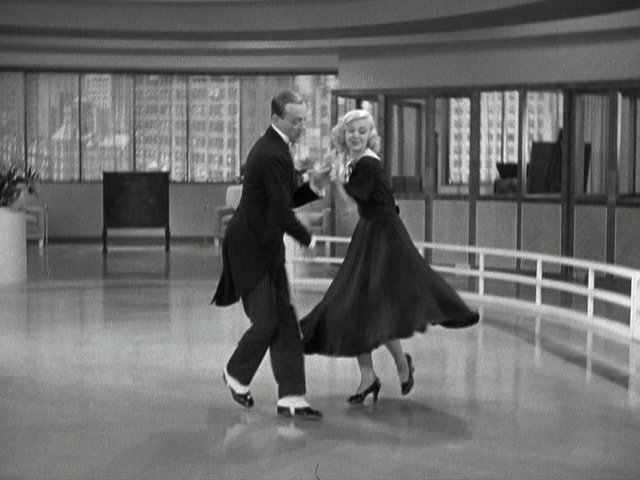
- Fred singing “The Way You Look Tonight” to Ginger while her hair is full of shampoo (actually whipped cream)
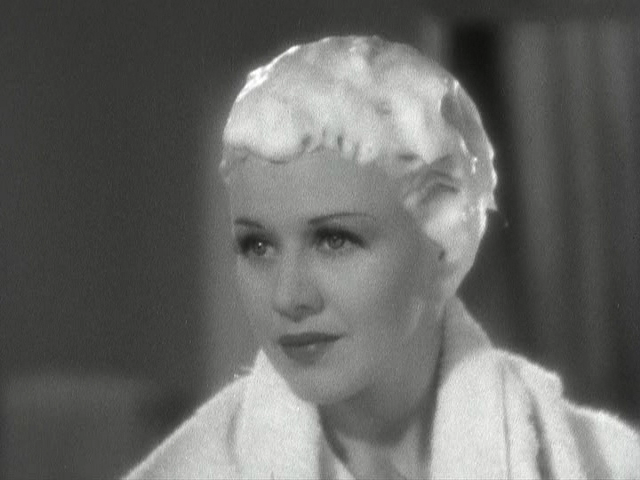
- Ginger and Fred dancing the classy “Waltz in Swing Time”
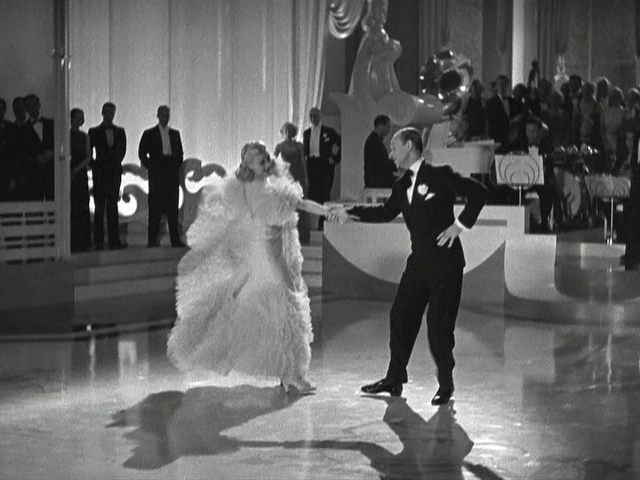
- Ginger and Fred singing “A Fine Romance” back and forth to each other across the snow
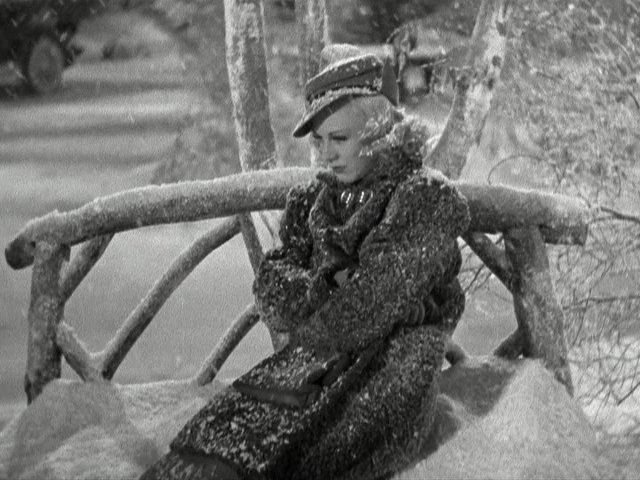
- Astaire’s Bojangles homage, dancing with the shadows
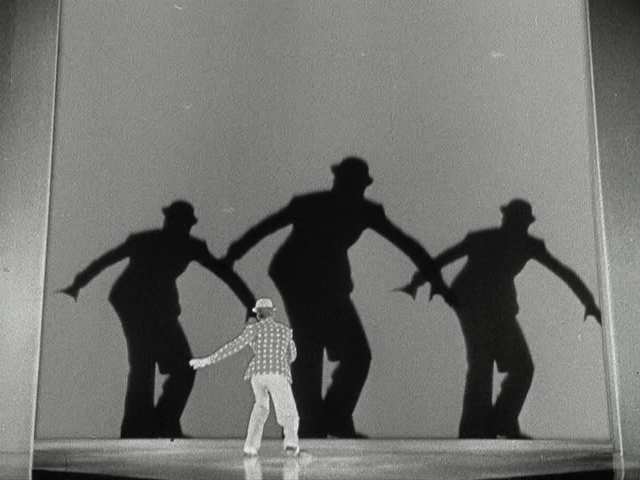
- Fred and Ginger’s evocative final dance
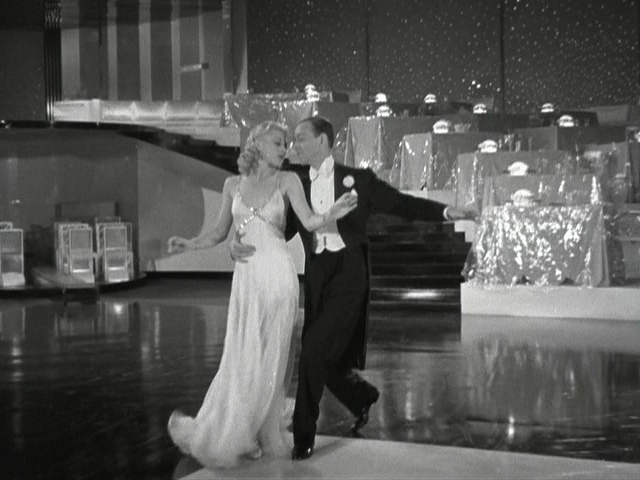
- Classy art deco set designs
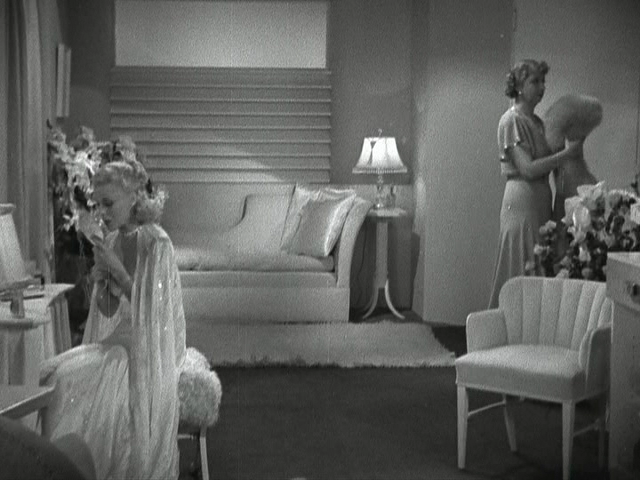
- Ginger Rogers giving perhaps her best performance of the series
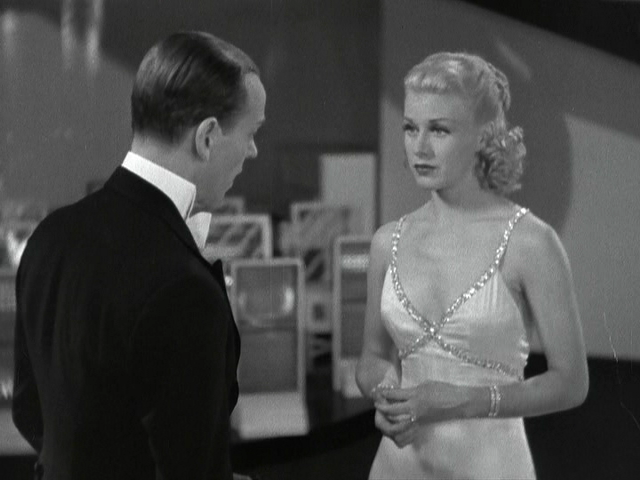
- Jerome Kern’s score — not just his signature songs, but the cleverly orchestrated soundtrack itself
Must See?
Yes, as one of the classic Rogers and Astaire collaborations. Peary nominates it for an Alternate Oscar as best picture of the year.
Categories
- Genuine Classic
- Oscar Winner or Nominee
(Listed in 1001 Movies You Must See Before You Die)
Links:
|









One thought on “Swing Time (1936)”
Unfortunately, I cannot concur here. I don’t consider this a must – and I doubt I could ever sit through it again. So I am ‘cheating’ by posting my review from Netflix (from several years ago):
[Not all the movies Fred and Ginger made were as magical as their dancing–this one is surprisingly dull; it comes off like the work of someone who respects musicals (George Stevens, apparently) rather than breathes them (i.e. Mark Sandrich, who directed better F&G work, like ‘Top Hat’). In F&G movies, we put up with nonsense scripts (though this one is not even fun in a goofy way) because of the dance sequences. Here, aside from one enjoyable number when they meet cute, the emphasis is on singing (not their strong suit)–unless you count the waltz (passe by this time) or Fred’s somewhat bizarre homage to Bill Robinson.]
Note re: above – I don’t mean to suggest that F&G are bad singers; just that they’re primarily dancers.